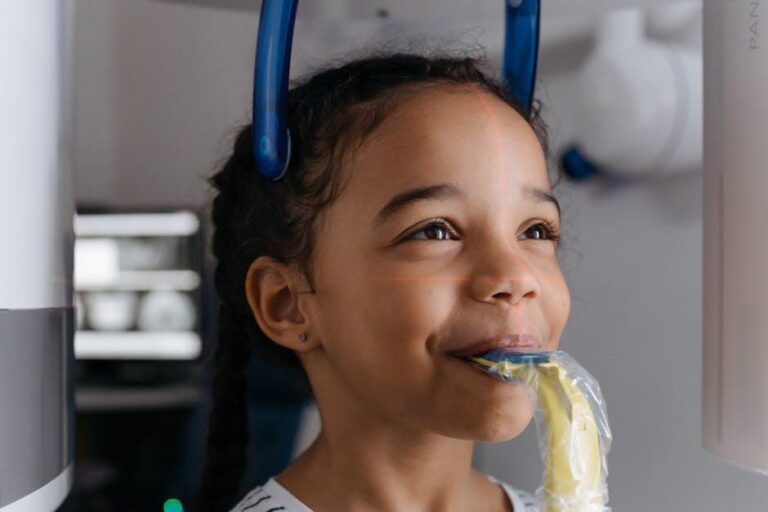
1 in 3 Kids Has Dental Problems, Poll Finds – U.S. News & World Report
According to a recent poll covered by U.S. News & World Report, nearly one out of every three children in the United States is dealing with dental problems. This alarming statistic highlights the urgent need to address pediatric oral health across the nation. Poor dental health during childhood can affect self-esteem, nutrition, and long-term health, making early intervention crucial.
Understanding the Scope: What Dental Problems Are Kids Facing?
The poll reveals that the most common issues among children include tooth decay (dental caries), gum disease, and untreated cavities. These conditions often arise due to inadequate oral hygiene, poor diet choices, and limited access to professional dental care.
Common Pediatric Dental Issues
- Dental caries (tooth decay): The most prevalent chronic disease in children, causing pain and infections.
- Gingivitis: Early stage gum disease marked by inflammation and bleeding gums.
- Enamel erosion: Loss of protective tooth enamel from acidic food and drink.
- Dental trauma: Injuries to teeth caused by accidents or sports.
- Malocclusion: Misalignment of teeth affecting bite and speech.
Why Are So Many Kids Experiencing Dental Problems?
Several factors contribute to the high prevalence of dental problems among children today:
1. Dietary Habits
Increased consumption of sugary snacks, sodas, and processed foods leads to a higher risk of cavities and enamel damage.
2. Inconsistent Oral Hygiene
Many children lack proper brushing and flossing routines, which are vital for plaque removal and gum health.
3. Access to Dental Care
Socioeconomic barriers make it challenging for some families to obtain regular dental checkups, early treatment, and preventive services.
4. Lack of Awareness
Some parents and caregivers are unaware of the importance of dental health in early childhood and don’t prioritize dental visits.
The Impact of Poor Dental Health on Children
Untreated dental issues can have far-reaching implications beyond just oral discomfort. These include:
- Chronic pain: Affecting eating, sleeping, and attention in school.
- Speech development issues: Resulting from damaged or missing teeth.
- Poor nutrition: Due to difficulty chewing or oral infection.
- Self-esteem problems: Caused by appearance or bad breath.
- Increased risk of systemic infections: Oral bacteria entering the bloodstream.
Data Breakdown: Pediatric Dental Issues Snapshot
| Dental Problem | Approximate Percentage of Affected Kids | Common Causes |
|---|---|---|
| Tooth Decay (Cavities) | 28% | Poor diet, no fluoride, insufficient brushing |
| Gum Disease (Gingivitis) | 15% | Inadequate flossing, plaque buildup |
| Enamel Erosion | 10% | Frequent acidic drinks, poor oral care |
| Dental Trauma | 8% | Sports injuries, accidents |
Practical Tips for Improving Kids’ Dental Health
Prevention is the best strategy to reduce dental problems among children. Parents and caregivers can apply these practical tips:
- Establish good oral hygiene early: Teach kids to brush twice daily with fluoride toothpaste and floss regularly.
- Visit the dentist regularly: Schedule routine checkups every six months to catch issues early.
- Limit sugary and acidic foods: Replace with fruits, vegetables, and water to protect enamel.
- Encourage drinking fluoridated water: Fluoride strengthens the enamel and prevents decay.
- Use protective gear: Mouthguards during sports can reduce dental trauma.
- Stay informed: Parents should educate themselves about pediatric oral health best practices.
Case Study: How Early Intervention Changed Harris’s Dental Health
Harris, an 8-year-old from Ohio, suffered from multiple cavities by the age of 7. After his parents consulted a pediatric dentist, they implemented a strict oral care routine, reduced sugary snacks, and attended bi-annual dental cleanings.
“We didn’t realize how much sugar was affecting Harris’s teeth. The dentist’s advice transformed his smile and confidence,” says Mrs. Harris, his mother.
Within a year, Harris’s dental health improved significantly, proving that timely care combined with lifestyle changes can make a big difference.
Benefits of Prioritizing Children’s Dental Health
Healthy teeth in childhood pave the way for lifelong well-being. The benefits include:
- Reduced risk of painful dental procedures and costly treatments later in life.
- Better speech, chewing, and nutrition supporting overall growth and development.
- Boosted self-confidence and social interaction without stigma from poor dental appearance.
- Lower school absenteeism due to dental-related pain or infections.
Final Thoughts
The finding that 1 in 3 kids in the U.S. suffers from dental problems is a wake-up call for parents, educators, and healthcare providers. By understanding the causes, recognizing the impact, and applying effective preventive measures, we can work together to improve pediatric oral health nationwide. Early intervention, education, and healthy daily habits are key to ensuring children grow up with strong teeth and brighter smiles.
Remember, healthy teeth lead to a healthier future — so start the conversation about oral care today!


